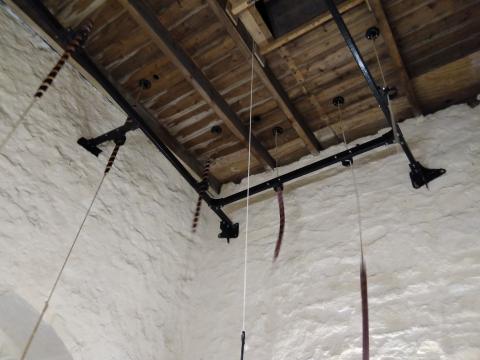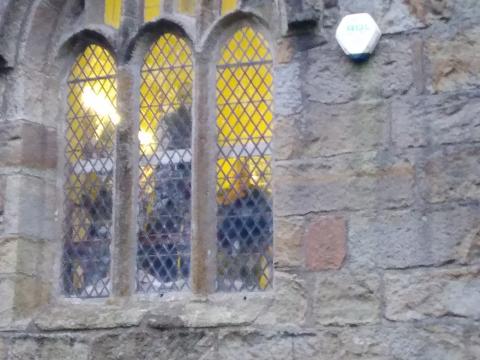Appealing Ghyll

I was wonderfully privileged this week to hear a peal attempted at St Mary-le-Ghyll Church, Barnoldswick. A team of ringers from around the country had assembled, first at Clapham and then Ghyll to ring the church bells. A peal lasts about three hours, and a number of methods (or tunes) had been selected in advance by the conductor, each with its own intriguing name: Bourne Surprise, Oxford Treble Bob, Single Court, Wimbotsham Place, College Bob, Grandsire, Plain Bob. I attended the tower at 3pm, the ringers kindly allowing me time to observe the ropes and practice before the peal began. Unfortunately, under two hours in, a clapper from one of the heavy seventeenth-century bells broke loose, crashing onto the floor above the ringers’ heads. The peal, quite rightly, was abandoned.

The part I heard early on, however, was wonderful. Ghyll is a popular tower at which to ring. Notwithstanding its bells’ propensity to fall apart, they are still tuneful and easy to ring, while there are few shirty neighbours likely to become incensed by the tolling. Indeed, as I stood against some ancient funerary monument admiring the sound while beholding the ringers through the large tower window, I was struck by a thought. That solid tower had been transformed from inert medieval structure to a gigantic musical instrument. As I walked home down the lane and through the fields, I could still hear it chiming in the distance. It was so boisterous and gladdening that I could not but smile. I guess such happens when God’s people join for worship. Our individual voices are quiet and plain, but together, our corporate adoration of the Godhead echoes through eternity. Our sounds might rival the angels in neither quality nor volume, but, having been graciously redeemed, we have more reason to sing. Seraphim may behold His majesty, but it is we who lavishly receive His grace.
When the morning stars sang together, and all the sons of God shouted for joy. Job 38:7
- Log in to post comments


 Sunday Worship 10.45am & 6.00pm
Sunday Worship 10.45am & 6.00pm